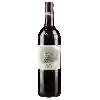
Winery F RengadeCuvée Réservée Bordeaux Cabernet Sauvignon
This wine generally goes well with poultry, beef or veal.
Food and wine pairings with Cuvée Réservée Bordeaux Cabernet Sauvignon
Pairings that work perfectly with Cuvée Réservée Bordeaux Cabernet Sauvignon
Original food and wine pairings with Cuvée Réservée Bordeaux Cabernet Sauvignon
The Cuvée Réservée Bordeaux Cabernet Sauvignon of Winery F Rengade matches generally quite well with dishes of beef, veal or game (deer, venison) such as recipes of dombrés and pig tails, osso bucco or venison stew to be prepared the day before.
Details and technical informations about Winery F Rengade's Cuvée Réservée Bordeaux Cabernet Sauvignon.
Discover the grape variety: Cabernet-Sauvignon
Cabernet-Sauvignon noir is a grape variety that originated in France (Bordeaux). It produces a variety of grape specially used for wine making. It is rare to find this grape to eat on our tables. This variety of grape is characterized by small bunches, and small grapes. Cabernet-Sauvignon noir can be found in many vineyards: South-West, Loire Valley, Languedoc & Roussillon, Cognac, Bordeaux, Armagnac, Rhone Valley, Provence & Corsica, Savoie & Bugey, Beaujolais.
Informations about the Winery F Rengade
The Winery F Rengade is one of of the world's greatest estates. It offers 8 wines for sale in the of Bordeaux to come and discover on site or to buy online.
The wine region of Bordeaux
Bordeaux, in southwestern France, is one of the most famous, prestigious and prolific wine regions in the world. The majority of Bordeaux wines (nearly 90% of the production Volume) are the Dry, medium and Full-bodied red Bordeaux blends for which it is famous. The finest (and most expensive) are the wines of the great châteaux of Haut-Médoc and the right bank appellations of Saint-Émilion and Pomerol. The former focuses (at the highest level) on Cabernet Sauvignon, the latter on Merlot.
The word of the wine: N-M
Negociant-manipulant. Company that buys grapes, sometimes in addition to its own vineyard, elaborates and markets its champagne. Most of the big brands like Moët or Taittinger are N-M.














